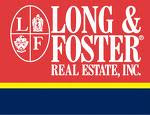Maryland's green version of historic tax credit bill becomes law
Washington Business Journal - by Daniel J. Sernovitz
A Maryland tax credit program aiding developers in finding new uses for older buildings got a new infusion of green Thursday. Gov. Martin O’Malley signed a bill earmarking $10 million for the state’s Sustainable Communities Tax Credit. The program replaces the state’s Heritage Structure Rehabilitation Tax Credit and expands eligibility to buildings across the state that are being rehabilitated but aren’t old enough to qualify as an historic structure under the old designation.
The historic tax credit, which was set to expire if not reauthorized, has come under fire from legislators across Maryland because it has favored Baltimore City more than other jurisdictions. That’s in large part because the city has more historic buildings than other counties in the state.
The revised tax credit encourages rehabilitation projects around transit lines and those projects that are tied to the federal Base Realignment and Closure plan. “The investments we make in our existing communities, towns and cities today significantly influence economic prosperity and sustainability in those places tomorrow,” O’Malley said in a statement.
The compromise should help main streets in places like Howard and Montgomery counties, while still fueling projects in Baltimore, said developer Donald Manekin. Manekin has benefitted from the credits for two of his projects in the city, Miller’s Court and Union Mill, rehabilitations of former industrial buildings that wouldn’t have been economically feasible without the aid, he said.
“This is seen as an important economic development stimulant and it plays an enormous part in the work we’re trying to do in and around the Baltimore area,” Manekin said in a telephone interview. Manekin’s Union Mill project benefitted from $2.9 million in tax credits, equity the developer can use to leverage more money to fund the $20 million project. Once it’s completed, the 86,000-square-foot mill will be converted into 54 apartments and 30,000 square feet of office space.
DC's Record Number Of Million-Dollar Neighborhoods
10 hours ago






No comments:
Post a Comment